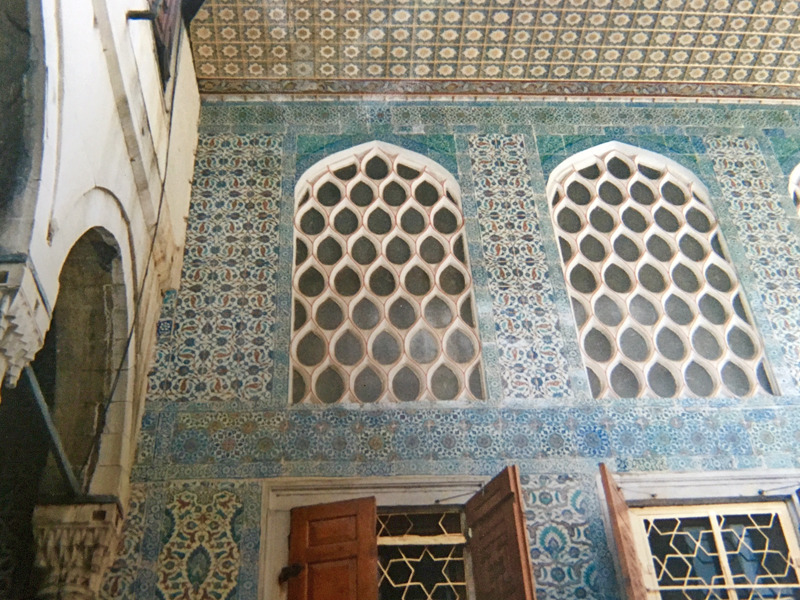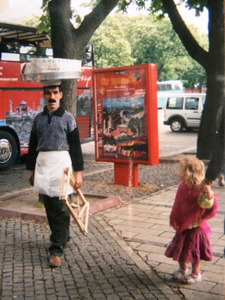 In 2004 we went to Turkey; it was our girls first overseas trip, Lily and Ella were 7 and 3 years old. For us it was on obvious place to go – the jewel connecting point between East and West, the Asian and European continents and cultures. Besides visiting the Topkapi Palace and its illustrious Harem, Istanbul also found us seeking out henna traditions there.
In 2004 we went to Turkey; it was our girls first overseas trip, Lily and Ella were 7 and 3 years old. For us it was on obvious place to go – the jewel connecting point between East and West, the Asian and European continents and cultures. Besides visiting the Topkapi Palace and its illustrious Harem, Istanbul also found us seeking out henna traditions there.
It wasn’t obvious, but occasionally I would glimpse a woman’s hand, slipped out from long sleeves, exposing henna on finger-tips, nails and palms. We supposed these women were from the country as the henna was simple, rough and seemed utilitarian rather than decorative. I was quietly excited by this light brush with local henna and kept my eyes open for more.
Kilos of the powder could be found in the city’s Spice Market. They assured us the Indian henna was best, but we wanted the Syrian. From our perspective, it was far more exotic – we’d never come across Syrian henna before and was unavailable in Australia. The Turkish perspective was possibly the opposite, with Syria being a neighbour, Indian henna was the more valued being from further afield. For us, Syrian henna had greater value – it was Persian after all.
We were advised to visit the Ortakoy Markets for henna art, but our enthusiasm deflated when we finally made it there and found only “black henna” and a design book full of American cartoon figures. I showed the artist there some photos of what I do; she said no-one was doing work as “professional” as this. How incredibly tragic I thought, with Turkeys extensive and elaborate art history, as well as rumours I’d heard of unusual design placement back-in-the-day. The ladies at the Ortakoy market were very curious how I mixed and applied my henna paste, so I shared what I do, hoping they might use real henna from then on. This experience made us understand that the culture of henna here was not traditionally found in the street, but in the home. It also indicated there was perhaps less activity in the city than in rural areas. Had its importance become less relevant in the city?
On our last morning we chatted to a neigbouring shop owner, Typhoon, who had moved to Istanbul from the country. In his village in Capidoccia, all the women use henna for their hands and their hair, and as a medicine to heal wounds. He told us they are farming families and the henna heals their cuts. Cuts on the body are treated with henna and other plants, (although he wasn’t sure which ones). He went on to explain that henna is part of their Shamanic Culture – nature worship, the evil eye and other superstitions, (such as not standing up to drink water!). When Islam moved in to this region, it was taken up as their religion, while shamanism was kept as their culture, hence, the continued use of henna. Typhoon was aware of henna’s original use to heal farming hands and that decoration came later. What a great street-side chat! I left that day satisfied we had been given a small, but authentic insight into the contemporary use of henna in Turkey. What a relief!


Post note: digital cameras were new to us in 2004 and we managed to delete all our photos from this trip! The images here are from Lily’s disposable camera.

